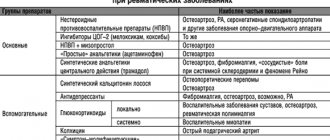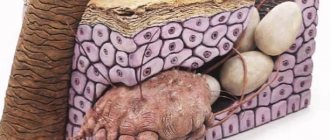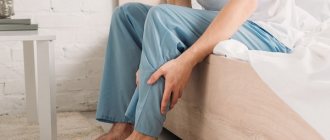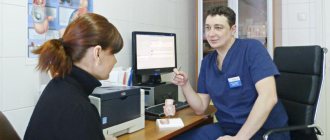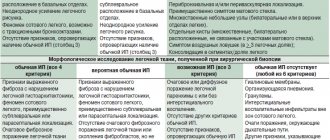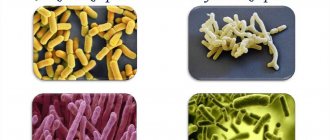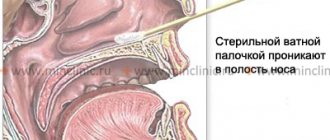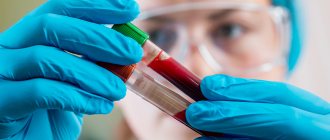Eczema is a chronic skin pathology that manifests itself in the form of foci of inflammation on the body, arms, legs and head. Rashes that form on the skin go through several stages of development: primary redness, dense nodules that transform into blisters, then weeping erosions form, which during the healing process are covered with a scab (the so-called “crust”). The last stage is peeling. Against the background of eczema, secondary purulent infections often develop. If left untreated for a long time, cosmetic defects of the skin may appear in patients of all ages.
Causes and symptoms of the disease
Doctors cannot give a definite answer to the question of what are the basic conditions for the development of pathology. Among the causes of eczema in patients, the following factors are considered:
- genetic conditioning;
- chronic allergies;
- pathologies of the endocrine system;
- psycho-emotional triggers.
Dermatologists distinguish several types of eczema: true, microbial, occupational and seborrheic. The clinical picture in each case turns out to be unique, as are the factors that provoke the inflammatory process on the surface of the skin.
| Types of eczema | Symptoms | Diagnosis of eczema |
| True | Symmetrical foci of inflammation in open areas of the skin, hyperpigmentation, weeping surface. Later, numerous vesicles form, in place of which microscopic erosions gradually develop. Exudate accumulates on them. Patients experience attacks of itching, and as the vesicles heal, peeling of the skin occurs | Diagnosis is carried out by a dermatologist during an examination of the patient. Symmetrical rashes on the arms, legs or face indicate that a child or adult is experiencing true eczema. |
| Microbial | Develops against the background of traumatic skin injuries, fungal, bacterial or viral infections. The lesions are asymmetrical and concentrated on the patient’s lower extremities. Varicose veins become a risk factor. Failure to comply with the rules of personal hygiene leads to the accelerated development of pathology. Under the skin adjacent to the pathological focus, accumulations of infiltrate are formed | The diagnosis is established by taking a history and visual examination of the patient. The doctor pays attention to traumatic injuries to the skin of the lower extremities, mycoses, and varicose veins. Bacteriological studies of scrapings are performed to identify the resistance of the eczema pathogen to antibiotics |
| Professional | It develops against the background of the patient’s professional activity due to regular contact of the skin with allergens: chemicals, dust, cleaning products, air with atypical humidity. The size of the rash varies. Foci of inflammation can be located on any part of the patient’s body. A characteristic symptom of eczema is an abundance of small vesicles | The main diagnostic technique is to exclude the factor that provokes inflammatory processes. If the professional nature of the rash is confirmed, the dermatologist can prescribe the appropriate course of treatment to the patient. |
| Seborrheic | Affects the skin of the scalp. The affected areas are dry and profusely peeling. Itching intensifies after performing hygiene procedures. Zones of inflammation have distinct boundaries. In some cases, the course of the disease is complicated by the formation of swelling and weeping cracks in the surface layers of the skin | Some dermatologists do not agree that seborrheic eczema can be considered an independent type of pathology (changes in the skin are considered a special case of the true type of disease). The main diagnostic technique is histological examination of cells to exclude microbial eczema from the diagnostic report |
Are you experiencing symptoms of eczema?
Only a doctor can accurately diagnose the disease. Don't delay your consultation - call
Sources
- National Center for Health Statistics, National Health Interview Survey, 2014.
- National Eczema Association website. Eczema causes and triggers.
- Thomas N. Helm and all. What is the role of neomycin in the etiology of allergic contact dermatitis? Medscape. -2020
- Susana Vilaça and all. Simultaneous contact allergy to neomycin, bacitracin, polymyxin, and dexamethasone: An often unrecognized cause of allergic contact dermatitis in patients using topical antibiotics. Journal of the American Academy of Dermatology. -2012, -V. 6, -I. 4, -S. 1, -P. AB74. https://doi.org/10.1016/j.jaad.2011.11.316
- A. C. de Groot, A. Herxheimer. Isothiazolinone preservative: cause of a continuing epidemic of cosmetic dermatitis. Lancet. -1989. DOI: 10.1016/s0140-6736(89)91318-4
- Atopic Dermatitis 101 for Adults. National eczema association. -2017
- JI Silverberg and all. Symptoms and diagnosis of anxiety and depression in atopic dermatitis in US adults. British Journal of Dermatology. -2019. https://doi.org/10.1111/bjd.17683
- A. Wollenberg and all. Consensus-based European guidelines for treatment of atopic eczema (atopic dermatitis) in adults and children: part IJ Eur. Acad. Dermatol. Venereol. -2018. DOI: 10.1111/jdv.14891
- John Elflein. Global use of prescription topical treatments and phototherapy for eczema 2021. -2020
- C. Fookes. Topical Steroids. Drugs.com. -2018
- A. Roeder and all. Safety and efficacy of fluticasone propionate in the topical treatment of skin diseases. Skin Pharmacol. Physiol. -2005. DOI: 10.1159/000081680
- NHS. Topical corticosteroids
- Give Topical Steroids the Fingertip. National eczema association
- Instructions for the medical use of the drugs FeniVate cream RU P N012556/01 dated 07/15/2009 and FeniVate ointment RU P N012556/02 dated 07/16/2009.
- New, sales start in June 2021
- Katsambas A.D., Lotti T.M. European treatment guidelines in dermatology. 2014, MEDpress-inform LLC, 3rd ed., trans. from English, 736 p.
- Ellie Choi and all. Efficacy of targeted education in reducing topical steroid phobia: A randomized clinical trial. Journal of the American Academy of Dermatology. -2020. -V. 83, -I. 6. -P. 1681-1687. https://doi.org/10.1016/j.jaad.2020.02.079
- NIAID. Eczema (Atopic Dermatitis) Treatment
Treatment and prevention
The above classification of eczema and description of the symptoms of the disease indicate the impossibility of self-treatment. Consultation with a dermatologist and consistent adherence to his recommendations remain the only way to relieve seasonal exacerbations. The key task of the doctor is to identify provoking factors. After this, a treatment strategy is formed - medications are prescribed to treat eczema. It may include systemic and local therapy. Physiotherapeutic procedures are an additional option.
Systemic therapy
The basis of drug treatment is antihistamines, which are designed to reduce the risk of developing acute allergic reactions of the patient to various internal and external factors. Sedatives are prescribed against the background of high psycho-emotional stress experienced by adults and children. Plasmapheresis and other types of hemocorrection are used in severe cases of the disease complicated by systemic pathologies.
If the effectiveness of the treatment is low, the doctor may prescribe the patient oral glucocorticosteroids. As the condition of the child or adult improves, the dose of hormonal drugs is reduced.
Local therapy
Retinol ointment is applied to local areas of inflammation. An alternative can be applications of pastes with keratolytic properties. Anti-inflammatory and antiseptic components contribute to the successful elimination of bacteria, viruses or fungal infections. If there are a significant number of vesicles, the patient is prescribed drugs with individually selected components. Their combination is based on the clinical picture of the pathology and the cause of inflammatory processes on the skin identified during diagnosis.
Physiotherapy
Physiotherapeutic complexes include:
- ozone therapy;
- magnetic therapy;
- laser stimulation.
In difficult cases, a dermatologist may insist on treating eczema-affected skin areas using cryotherapy. After overcoming the acute phase of the disease, therapeutic and mud baths are recommended for children and adults. In some cases, irradiation of damaged skin areas with ultraviolet rays is prescribed. To determine the correct treatment, the dermatologist may refer the patient to a physical therapist.
Preventive measures
If signs of eczema are detected, patients should seek advice from a dermatologist. After confirming the diagnosis, you should follow a diet - you must exclude foods that can provoke allergic reactions from your diet. It is recommended to refrain from drinking alcohol and smoking cigarettes.
Personal hygiene rules when treating eczema of the feet, hands, arms, legs or face include avoiding scented soaps. To moisturize the skin, it is permissible to use water-based creams.
How to avoid worsening dermatitis in winter
In winter, exacerbation of dermatitis is common. Even healthy skin can have a hard time coping with temperature changes and dry indoor air. The following will help you get rid of the symptoms of the disease even in the frosty months:
- cold compresses,
- warm baths with oatmeal or baking soda,
- creams or ointments for the body with a high concentration of oils in the composition (apply the cream immediately after a bath or shower).
In winter, it is especially important to try not to irritate the skin, do not rub it with a towel, avoid scratches, and do not use cosmetics with fragrances (Fig. 4). When cleaning, be sure to wear gloves and goggles when using aerosol cleaners. In clothing, preference should be given to soft, natural fabrics, such as cotton. Thus, during the cold season, the daily routine should be even more gentle than usual.
Figure 4. How to care for skin with eczema in winter. Illustration: MedPortal
Questions and answers
Are there differences in the causes of eczema on the hands and eczema on the feet?
The appearance of foci of inflammation on the extremities is in most cases associated with traumatic factors or exposure to aggressive chemicals. The formation of vesicles or weeping on the body is often the result of allergic reactions and systemic pathologies identified in patients.
What are the main clinical recommendations for diagnosed eczema?
A patient with a confirmed diagnosis of eczema should discuss with a dermatologist the advisability of consultations with other doctors: endocrinologist, allergist, gastroenterologist. Their use can reduce the frequency of exacerbations of the disease and reduce the intensity of reactions to factors that provoke the inflammatory process.
Do patients with chronic eczema need to take any medications regularly?
Drug and hardware treatment along with courses of physiotherapy are prescribed during periods of exacerbations. After relief of acute symptoms of the disease, the patient does not need to systematically take medications. A significant role during this period is played by the child or adult’s compliance with the recommendations of the attending physician and preventive measures.
How to live with dermatitis
Atopic dermatitis in adults can become chronic, and then you will have to fight it all your life. There is no cure for eczema, but the good news is that the disease can be controlled by keeping symptoms to a minimum. To do this you need 18:
- know and exclude contacts with triggers that provoke inflammation,
- take good care of your skin,
- use medications prescribed by a specialist.
It is very important to individually select the type and form of the drug so that the therapy is effective and comfortable for the patient. This also applies to topical steroids. In addition, you need to constantly monitor the development of the disease and be under the supervision of a specialist. Long-term remission may be a reason to gradually discontinue medications or switch to small doses of the drug. If symptoms increase, the specialist will help adjust the treatment plan by selecting a new therapy.
Unfortunately, sometimes eczema is unpredictable. It can flare up suddenly, and sometimes it can be difficult to understand why it has returned. The cause of its manifestation may be stress, anxiety, climate change or the quality of tap water. Living with eczema, you always need to be on guard. But even if the disease makes itself felt at the most inopportune moment, you should not perceive it as a disaster. Since our emotional state is closely related to the manifestations of eczema, we can overcome the disease only by accepting our skin as it is. There is no need to hide dermatitis, it needs to be treated, and then the skin will definitely reciprocate the love shown.
Features in children
Coin-shaped eczema in children has the same symptoms as in adults. At the first visual examination, a dermatologist can make a diagnosis and is able to distinguish the disease from similar pathologies. But the danger of such eczema is that it quickly becomes chronic, and constant relapses become difficult to cure. Many suffer from periodic outbreaks of the disease from childhood until the end of their lives only because their parents did not seek treatment in time. But in the early stages, the disease can even be cured completely.
In babies, round rashes begin to appear on the skin, shaped like coins.
Complications of the disease may even require the use of antibiotics. Doctors usually prescribe them when yellow or serous-yellow pus oozes from eczema. It indicates the addition of a secondary infection. This condition is treated exclusively in a hospital setting, as it is a severe complication of the disease.
Coin-shaped eczema in children is treated with complex medications. Usually the doctor selects individual therapy, depending on the characteristics of the patient’s body. In pediatrics, Lokoid ointment (0.1%) is used as a mild antipruritic and anti-inflammatory agent. It is often recommended to supplement official treatment with traditional methods - they enhance the therapeutic effect. But self-medication is strictly prohibited, especially when treating children.
Main article: Eczema in children
Diagnostics
The disease is diagnosed quite simply. A dermatologist can make a correct diagnosis based on a skin examination. To exclude similar diseases, a biochemical analysis is prescribed, as well as a general blood and urine test.
A histological and morphological examination of the skin is carried out to make a differential diagnosis. A serological blood test is often prescribed to detect specific IgE/IgG antibodies.
If there are signs of the development of a secondary infection, the contents of epidermal smears are sown on a culture medium to identify the pathogen and select an antibiotic sensitive to it.
Coin-shaped eczema is very similar in its symptoms to psoriasis, dermatomycotic pathologies, scabies and other dermatitis, so it is important not to self-medicate, but to make additional diagnostics.
